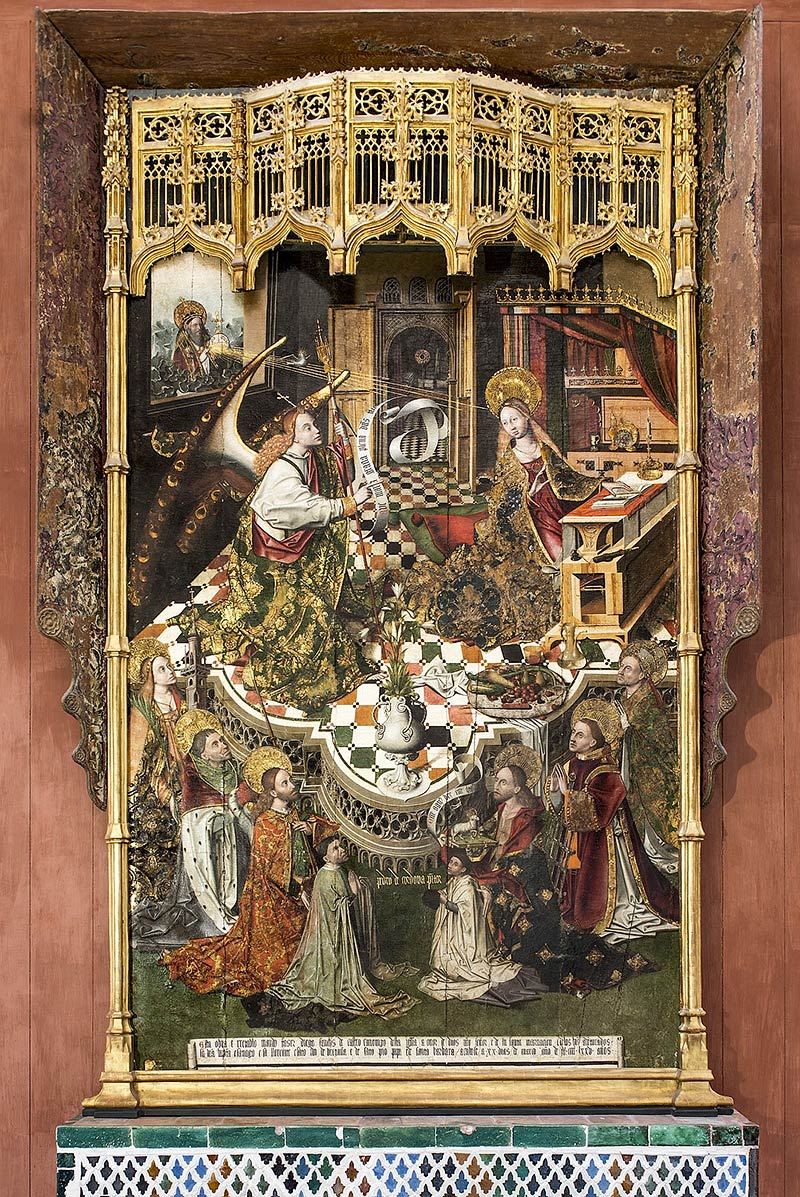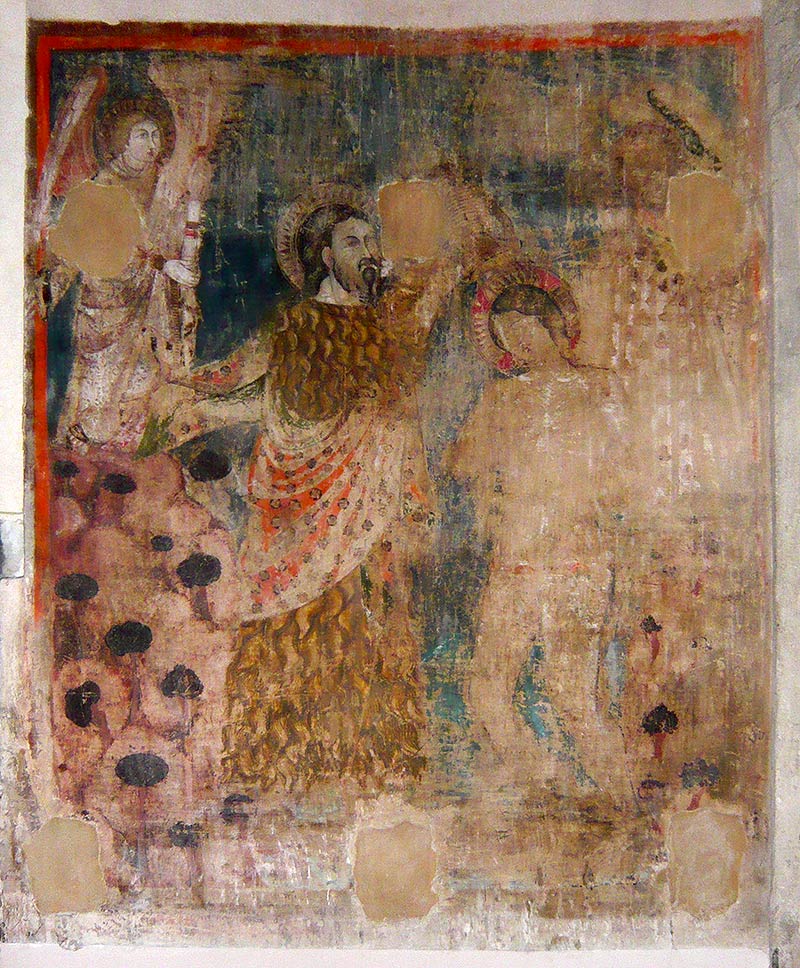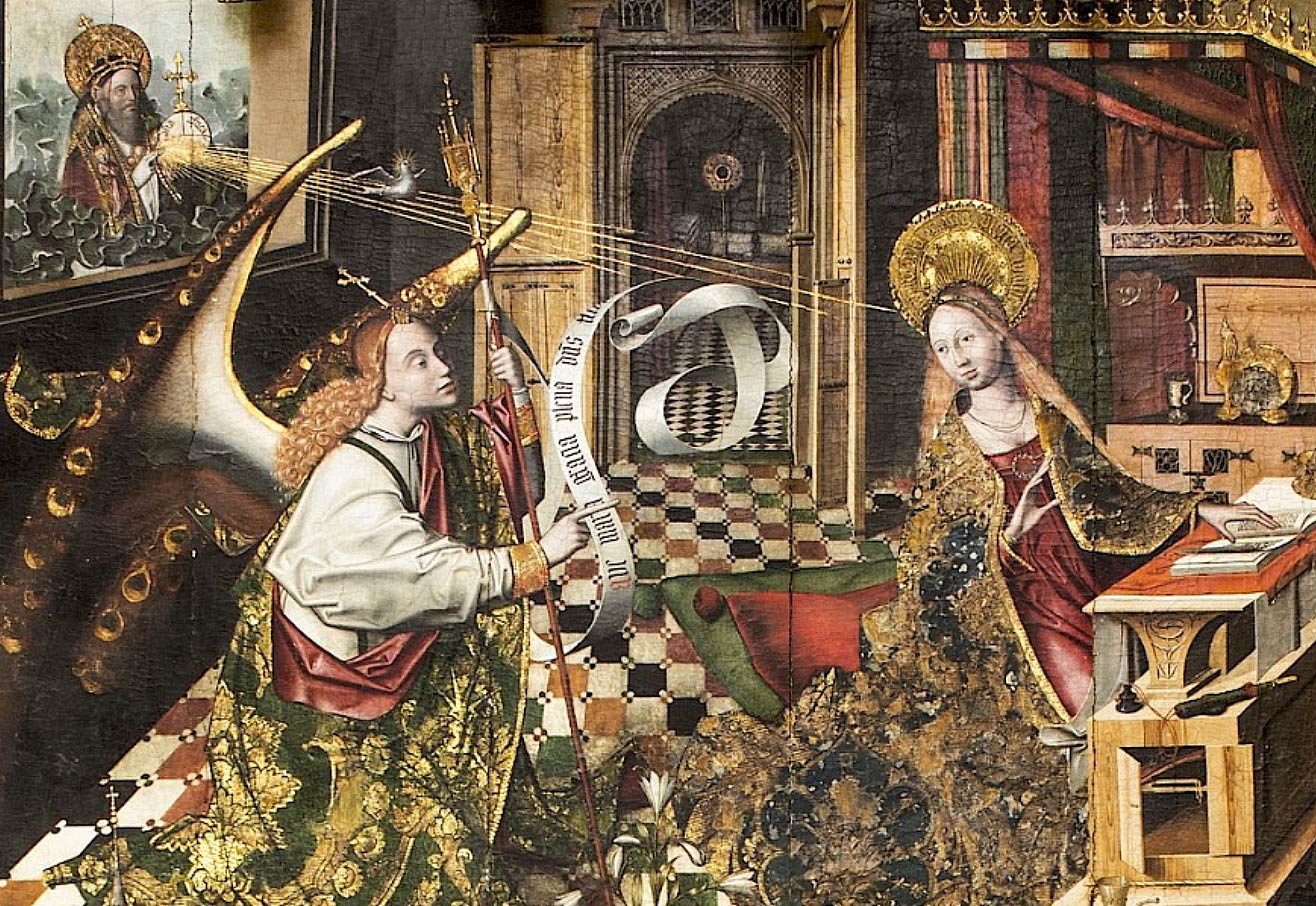The XVth century brought changes to Fine Arts and particularly to Painting. Gothic Art, its forms of representation (sculpture, glass and tesseras), was showing signs of depletion. That and the availability of new techniques such as oil painting or perspective were already giving notice that Painting will become the main form of representation up until the “recent” development of photography.
However, despite the new ways, every new thing grows its roots from old ashes. In that manner, Jan van Eyck, who is thought to have developed oil painting, feeds from Gothic Art. An old codex written by Teophilus “De Diversa Artibus” (a handbook written around the XIIth century where all known methods to work the glass at the time were gathered and that included the process of making lifelong mixtures to dye glass) would be the technical milestone for van Eyck’s development of oil colors.
But, lets get to the point: what does it all have to do with Córdoba? A lot. At that time, around the mid XVth century, Barcelona and Córdoba are the two big centers of Gothic Art in Spain. Any decent academic study would show the strong relationship between these two cities when talking about painting. However, lonely and forgotten, the city shall wait until the XIXth century for the enthusiastic interest of archeology and museums to get rid of the dust accumulated on these astounding art treasures.
Thankfully, the Romero de Torres family, in its effort to rebuild the so called Fine Arts Museum of Córdoba, listed all the great Gothic painters the city had produced over time, they would be called “The Primitives”. The family would also denounce the state of complete neglect in which many of this jewels remained, with some degree of success.
And then, these unsung painters rose from the dead: Pedro de Córdoba, author of todays painting. The great Bartolomé Bermejo, who built his career working panels at Barcelona’s Cathedral, although he was born in Córdoba. Alejo Fernández, also born in Córdoba, who was requested in Sevilla to paint the Cathedral and there produced the rest of his work. Alejo Fernández is considered nowadays the father of the Andalusian Gothic Art, in some biographies he is even portrayed as Pedro de Córdoba’s master. However this would be quite difficult taking into consideration that Pedro’s painting of the Annunciation dates from 1475, precisely the year Alejo was born. It is quite strange that a baby taught a mature artist. It seems to me they might have the other way round.
Anyway! I should quit this chatter, there is no ending to what can be said about these forgotten artists. I shall only say that it is very likely that the long stays in Córdoba of Isabella Queen of Castile had something to do with her deep love for theses rare paintings. It is well known that she would always travel with a cohort of Flemish painters, among them was Juan de Flandes and Michel Sittow. Isabella’s support is nowadays considered as the first big Art patronage in Spain.
♠ ♠ ♠

The Annunciation ( or Incarnation, they are the same thing ) has its place next to the chapel of Saint Inés (wall of the Quibla –South– by the Cathedral’s treasure). It is an oil painting on panel of 271 x 156 cm dating from 1475. Painted by Pedro de Córdoba for Diego Sánchez de Castro’ chapel.
At the bottom of the original framework it can be read the following inscription in monastic characters:
“This altarpiece was ordered to be done by Diego Sánchez de Castro, Canon of this Saint Church, in honor of God and of his Holy Incarnation, and of the blessed Saint John Baptiste and Santiago and Saint Llorente and Saint Ibo of Britain and Saint Pío Papa and Saint Bárbara. It was completed in 20 days in March of 1475.”
Every Saint mentioned in the previous inscription is represented in the painting with golden halos and their names written in them; there are also two kneeling figures: the donors. The first one on our left wears the conventional dress of a Canon and represents Diego Sánchez de Castro. The second figure, wearing a white full-length dress, stands as the explicit portrait of the author, as his name is written above him. It says: “Pedro de Córdoba painter.”
We stand before one the first oil-based paintings and considered for a long time the oldest dated artwork in Spain.
Here you can examine it in detail.
♠ ♠ ♠

This painting of The Incarnation should always be hand in hand with another painting. “The Baptism of Christ”, an anonymous mural painting dating from 1390, surprisingly appeared when in 1989 Pedro de Córdoba’s panel was taken down to be restored. What a strange thing to happen! The new oil-based painting was covering the Gothic remains of the city. This is, without any doubt, the oldest painting in Córdoba.
I know that the Mezquita overwhelms most of the the Cathedral’s artwork and that it also has resulted in the disdain for Christian art. However, do not miss these two artworks that cohabit in the Mezquita! You no longer have an excuse! It is easy to see the evolution from its primitive form to the later Renaissance. Quite a thing!

